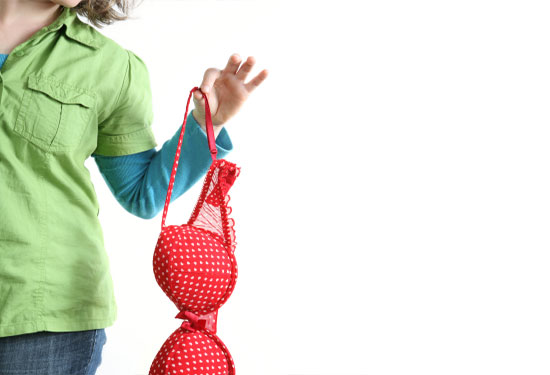
All fashions come back around. What was in style during one season will definitely make an appearance again after some years. However, certain aspects of style take longer to come back into current trends again. This is the case of the shoulder pad. Extremely popular in the 80s and early 90s, they have yet to come back to popularity, especially to the same degree as they were at that time. While some coats have small built-in shoulder pads to create shape, gone are the blouses, dresses and even dressy T-shirts with shoulder pads. Such looks are not likely to come back anytime soon.
So what does someone do with clothes that still have the shoulder pads attached. Many of the outfits of that era are back in style again now, without the extra padding. If you have kept any of your clothes from that era and would like to wear them again, you can do so by removing the shoulder pads.
Removal of shoulder pads from most garments is relatively easy. In most cases, the pads have been attached with a couple of very small stitches after the garment was finished being made. What this means is that to remove such pads you will need a seam ripper or a tiny pair of small scissors and good light.
Turn the garment inside out and carefully examine the shoulder pads and the way they are attached in good light. Only when you are sure that you can remove the stitches without pulling out any of the nearby seams should you proceed. Slip the pointy end of the seam ripper into the stitches and slowly with a slight rocking motion, cut the threads. This will allow you to easily lift out the shoulder pads. Remove any loose threads and discard them.
If you happen to find that the shoulder pads have been sewn into the garment along the seam, you may still be able to remove them without ruining the item. If it is simply the pocket that the actual foam pad is in that is attached to the garment, you can remove the bulk of the shoulder pad by cutting a neat slit in the pocket and removing the pad itself. You may leave the pouch in place if the piece of clothing is bulky enough so that it doesn’t show. If it shows through the fabric or creates bulk, you can solve the problem by carefully cutting the pocket down to size so the only part remaining is what is attached to the seam.
Once you have removed the shoulder pads from your article of clothing, you should iron the item or steam it. This will help to give it its new shape and make the absence of the padding less noticeable.
Quick and easy clothing surgery like this can revitalize even the oldest items in your closet. Don’t be afraid to make changes to items you own in the name of fashion. If you’re not wearing it because it’s not in fashion, you have nothing to lose. So go ahead and be brave with your clothing surgery.









